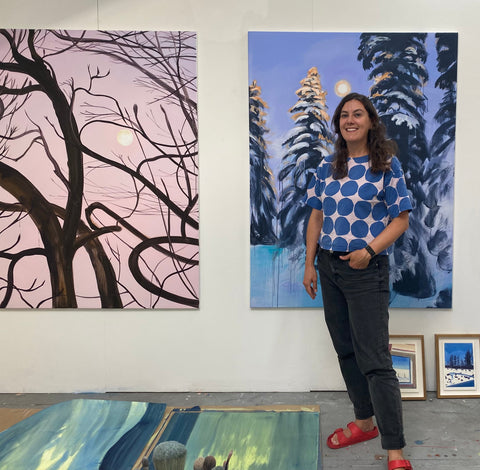Meet the Tutors: Catherine Knight

We often say that the RWA is so much more than an art gallery, and the same is true of the Drawing School. It is so much more than a place you learn to draw.
The RWA Drawing School, or RWADS for short, is a place to treat yourself, try something new, meet like-minded people, and most importantly, a place where you can learn from the best.
Our RWADS tutors come from a broad range of artistic backgrounds and disciplines, but they all have the same passion for sharing their craft.
We spoke to Catherine Knight, who will be teaching Nocturnes: Landscapes in Oils this term.
Hi Cat, can you tell us about yourself and your practice?
I am a painter based at BV Studios Bristol working mainly in oils but also sometimes gouache. I work in series, normally inspired by a trip or residency and have made work based on Iceland, Finland and most recently a pilgrimage to Edvard Munch's house in Norway. I have also made projects from crowd-sourced images, for example, during lockdown, I painted over 180 Isolation Window paintings from images sent to me via Instagram. I did a similar project collecting people's photos of the full moon from different locations and painted them, exploring the idea that we are all looking at the same moon but from different perspectives. I have a painting in the RWA Annual Open which is an interior scene of my cat by the fire. What links all these threads is capturing various light effects and using colour to create atmosphere.
Your classes this term are both using oil paints – what draws you to oils as a medium?
For me I am drawn to oil paint for the richness of the colours available and its versatility- it can be used thinly in washes as well as in solid blocks of colour. The slowness of its drying time means there is time to blend on the surface of the painting or totally wipe away what you have done. My only warning is that it is addictive!Can you tell us about your upcoming course, Nocturnes: Landscapes in Oils? Where will students be looking for inspiration?
I love teaching Nocturnes in November, as the evenings are drawing in. I tell students to take a walk at dusk and look at all the various light sources: the glow from people's windows, the streetlights, moonlight. We start by looking at the original Nocturne painter, Whistler followed by Munch, then Hopper, and finally contemporary artist, Heidrun Rathgeb. These artists all have a different style and we can take various lessons from each of them.

'Glimpse', oil on linen. Catherine Knight.